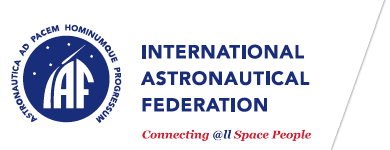Technical programme
IAC-26 — 77th International Astronautical Congress
A4. 55th IAA SYMPOSIUM ON THE SEARCH FOR EXTRATERRESTRIAL INTELLIGENCE (SETI) – The Next Steps
Organised by the International Academy of Astronautics (IAA), this symposium brings together scientists, engineers, and thinkers from across the globe to tackle one of humanity’s most profound questions: Are we alone in the universe? The Search for Extra-Terrestrial Intelligence (SETI) combines cutting-edge science and technology with deep interdisciplinary inquiry. Researchers are combing through huge astronomical datasets for anomalies — “technosignatures” — that could point to the presence of advanced civilisations in our Galaxy and beyond. This search spans the entire electromagnetic spectrum and employs some of the world’s most powerful telescopes, alongside innovative technologies such as artificial intelligence, to uncover subtle signals that might otherwise be missed. But SETI is more than a technical quest. It challenges us to consider the social and cultural implications of detection: What is best practice in conducting the search? How would humanity respond? What might it mean for our art, language, education, laws, politics, media, and even our psychology? From risk communication to public outreach, the symposium draws on a rich tapestry of disciplines to explore the profound impact of discovering we are not alone.
- Coordinator
Andrew Siemion
Berkeley SETI Research Center — United StatesMichael Albert Garrett
University of Manchester — United Kingdom
A4.1. SETI Science and Technology: Current and Future Directions
This session examines the scientific and technical foundations of the Search for Extra Terrestrial Intelligence (SETI), focusing on how we design, execute, and refine strategies to detect evidence of other technological civilisations. Researchers are analysing huge astronomical datasets for technosignatures — from narrowband radio signals to unusual infrared or optical anomalies — across the entire electromagnetic spectrum. Increasingly, multi messenger approaches (e.g. gravitational waves, neutrinos etc) are also being applied to broaden the search. We aim to highlight developments in observational techniques, next generation instrumentation, and new search strategies, including the use of artificial intelligence to mine complex datasets for subtle anomalies. The session welcomes contributions on current and future projects, emerging technologies, and creative approaches that will shape the next generation of SETI research.
- Co-Chair
Karen Perez
SETI Institute — United StatesDavid DeBoer
Oxford University — United Kingdom
A4.2. SETI and Society: Exploring the Human Dimension
This session addresses the interdisciplinary aspects of the Search for Extra Terrestrial Intelligence (SETI), focusing on the profound social and cultural consequences of detecting a signal from another intelligent civilisation. Such a discovery would ripple through every aspect of human life, raising questions not only for scientists but for policymakers, educators, politicians, artists, and the public at large. We invite contributions exploring how different disciplines - from anthropology, sociology, psychology, and law to politics, media studies, education, and the arts — can help us understand and prepare for this momentous event. Topics include best practice for managing the search, engagement with the public and media, risk communication, and the institutional and ethical frameworks needed to guide our response. This session provides a forum for building a truly global, inclusive dialogue on how humanity might navigate first contact - intellectually, culturally, and practically.
- Co-Chair
Lori Walton
— CanadaPaolo Musso
InCosmiCon Research Center — Italy
A4.IP. Interactive Presentations - 55th IAA SYMPOSIUM ON THE SEARCH FOR EXTRATERRESTRIAL INTELLIGENCE (SETI) – The Next Steps
This session offers a unique opportunity to deliver your key messages in an interactive presentation on any of the subjects of SETI addressed in the classic Sessions. The presentation will be displayed on a digital screen in a dedicated location and available for view by all Congress attendees for the entire Congress week. In addition, one afternoon is dedicated exclusively for the attendees to view the Interactive Presentations, and the author will be assigned a specific ten minute slot to personally present the topic and interact with the attendees present. The Interactive Presentation may take advantage of all electronic display capabilities, such as: PowerPoint charts, embedded hot links, pictures, audio and video clips etc. An award will also be presented to the author of the best Interactive Presentation in the A Category at a special ceremony. An Abstract that follows the standard format must be submitted by the deadline for standard IAC abstracts.
- Co-Chair
Andrew Siemion
Berkeley SETI Research Center — United StatesMichael Albert Garrett
University of Manchester — United Kingdom
